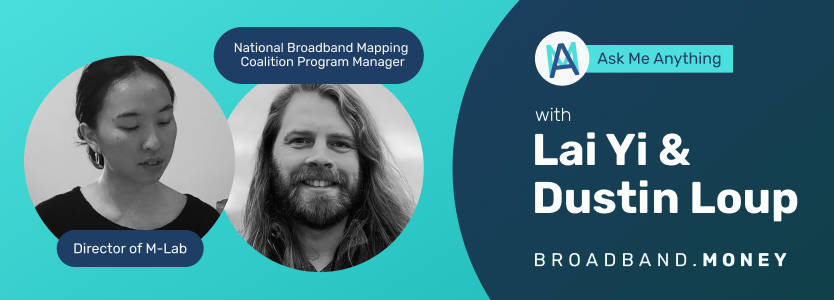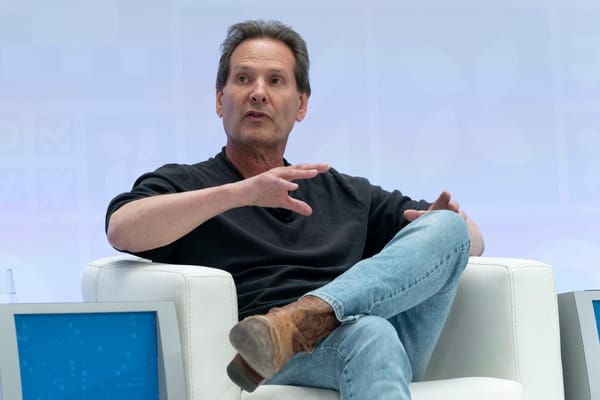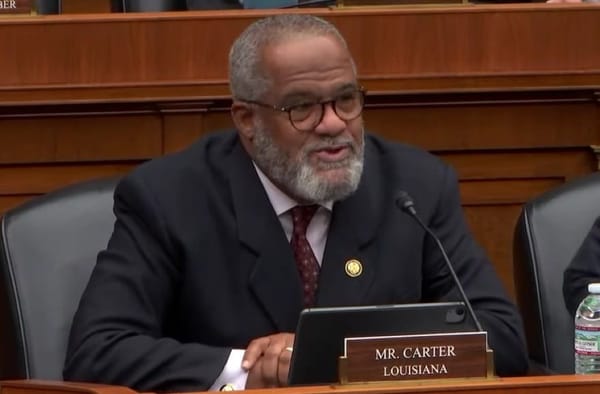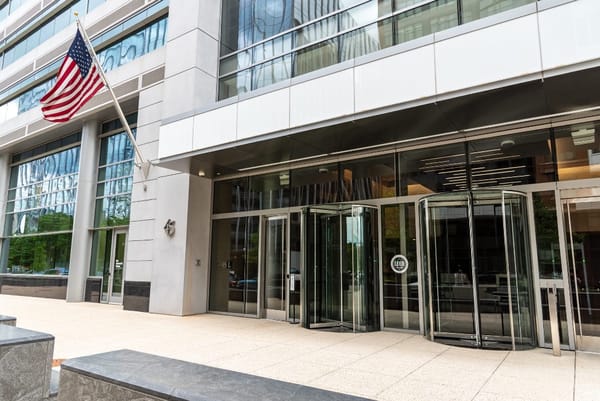Broadband Mapping Coalition Seeks to Bring Openness Back to Internet Data
The coalition will play a crucial role in broadband data as government implements the largest expenditure of broadband funds.

June 17, 2022 – Non-profit organizations and academic researchers seeking to ensure the openness and transparency of broadband data collection efforts have created an organization, the National Broadband Mapping Coalition, seeking to gather resources on data and mapping.
Shepherded by the Marconi Society, this National Broadband Mapping Coalition has filed comments before the Federal Communications Commission and is ramping up its efforts to be a leading voice for open and transparent broadband data.
The group is led by Dustin Loup, of the public interest group Marconi Society. Loup has been actively involved in the internet governance and policy space for years. Together with Measurement Lab (which is led by Lai Yi Ohlsen), a non-profit group that has been collecting broadband speed data since 2008, these two organizations are poised to promote the vital role of open broadband data as the U.S. Commerce Department implements the largest expenditure of federal broadband funds in history.
Join Broadband Breakfast’s Drew Clark in Friday’s Broadband.Money Ask Me Anything! with Lai Yi Ohlsen and Dustin Loup, on June 17, 2022, at 2:30 p.m. ET.
Why we need open broadband data
In a recent piece on Broadband.Money, Sarah Lai Stirland details the importance of actual speed data in challenging existing Federal Communications Commission broadband data:
- If you click on the census blocks around Newcastle in Broadband Money’s online map, you’ll see that the Federal Communications Commission data shows the blocks as “served” because at least one location has access to internet service of 1000 Mbps symmetrical service. That information is self-reported data from the form 477 that the FCC requires internet service providers to provide.Speed tests from Ookla and the non-profit M-Lab, however, indicate that that census block is, at the very least, “underserved” by the standards established by federal legislation such as the American Rescue Plan Act and the Infrastructure, Investment and Jobs Act. M-Lab says that average internet speeds in the area are 22 Mbps * 5 Mbps and Ookla reports 63 Mbps * 6 Mbps.
Lai Stirland’s profile of Ohlsen and Loup also discusses her skills in computer science and project management, and Loup’s history of involvement in the internet by the Arab Spring.
On a personal level, I’ve been a strong advocate of the importance of public and open broadband data for more than 15 years. See “U.S. broadband infrastructure investments need transparency,” ArsTechnica, February 10, 2009. That op-ed recounts our efforts to obtain FCC Form 477 data in 2006 and 2007, followed by founding BroadbandCensus.com in January 2008 to crowdsource the collection of broadband speed and availability data.
But this was superseded by the National Broadband Map, version 1.0, launched in February 2011. In that first national broadband map, State Broadband Initiatives (like the Partnership for a Connected Illinois) played a primary role in the collection of provider data about broadband availability.
But that national broadband map failed for two reasons:
- Everyone in a census block was considered “covered” if one person in a census block was “covered,” or served with 25 Mbps * 3 Mbps broadband.
- Broadband speeds were self-reported by providers, and there was limited fact-checking, or crowdsourcing, of actual broadband speeds.
Broadband mapping is about to become one of the most central issue in the rollout of the Infrastructure Investment and Jobs Act. Without the crucial check of open and public data, broadband mapping runs the risk of falling victim to the same challenges of the last decade.
Who is the National Broadband Mapping Coalition?
The National Broadband Mapping Coalition lays out the problem, and the solution, extremely well on its web page – which is worth quoting at length:
- U.S. policymakers, advocates, and researchers need access to more comprehensive and reliable data on broadband coverage in order to solve the digital divide. The data currently available is insufficient and often misleading. Through a partnership with leaders who value transparent, peer-reviewed, open data, we’re innovating a new approach to mapping broadband network analytics that will help stakeholders gain data-driven insight into this critical issue.
- The Problem
Millions of U.S. residents live without adequate broadband access. While the FCC collects self-reported broadband coverage data from Internet Service Providers (ISPs), that data is often inaccurate and incomplete, and does not offer a detailed, granular picture of connectivity and affordability gaps. Without more complete data, localities face barriers in making their case for securing state and federal funding that is intended to address these digital divides.We believe transparent measurement standards based on new and existing open-source and openly verifiable methodologies are necessary to provide communities with the tools they need to collect data on connectivity speeds, pricing, and availability.State, local, and U.S. Governments restrict data collection and/or sharing for a variety of reasons, resulting in the inability to provide full transparency. The work of the National Broadband Mapping Coalition is intended to strengthen government broadband initiatives and provide the public with much-needed performance information…. - Coalition
We have convened a national coalition of leaders in digital inclusion, technology, research, and policy. Responding to an increased focus on broadband adoption and measurement at the federal level, as well as the continued failure to consistently and verifiably map existing broadband infrastructure, performance, and value, this coalition aims to establish best practices and enable communities, governments, and individuals to access information they need….
In addition to the Marconi Society and M-Lab, other charter partners of the coalition include Google (which has supported M-Lab since its launch), the Internet Society, the Institute for Local and Self-Reliance, and X-Lab. Read more about its vision and mission.
See also:
Community Crowdsourcing Efforts Essential to Accessing Federal Broadband Funding
“Ten Years After the Beginning of Broadband Data Collection Efforts, M-Lab Gathers to Celebrate,” Broadband Breakfast, August 8, 2018
“M-Lab Celebrates 10 Years of Broadband Speed Tests, Discusses Work with Schools and Libraries,” Broadband Breakfast, August 16, 2018
Priorities for open broadband data research
Rather than creating one more map, the National Broadband Mapping Coalition is beginning to bring a greater clarity around the importance of open and transparent data for broadband.
In its recent filing at the FCC, the coalition discussed the comparability of quality of service metrics, with a particular focus on the basic forms of measurement: download and upload speeds and latency. But they say,
- Speeds and latency are common metrics many people are familiar with, but they are not the only metrics of Internet performance that matter to the quality of service. Jitter, packet loss, and bufferbloat (latency under load) each have a direct impact on actual experience of Internet users. When any of these metrics are performing poorly, it can be especially detrimental to the performance of real-time applications that support activities, such as a telehealth appointment, job interview, virtual classroom participation, or meeting a new grandchild from thousands of miles away. These impacts on the quality of experience can occur regardless of the bandwidth. Additional quality of service metrics such as network uptime and the mean repair time to restore access are important metrics. The Coalition recommends that the Commission takes steps to identify a set of measurable quality of service indicators, including but not limited to those described in these comments.
No one said that broadband mapping was going to be easy. The more rocks that you turn over, the more dirt that you find. But the easiest way to improve and to course-correct is to be scientific. And that starts with open and transparent data.
Learn more by joining Broadband Breakfast’s Drew Clark in Friday’s Broadband.Money Ask Me Anything! with Lai Yi Ohlsen and Dustin Loup, on June 17, 2022, at 2:30 p.m. ET.











Member discussion